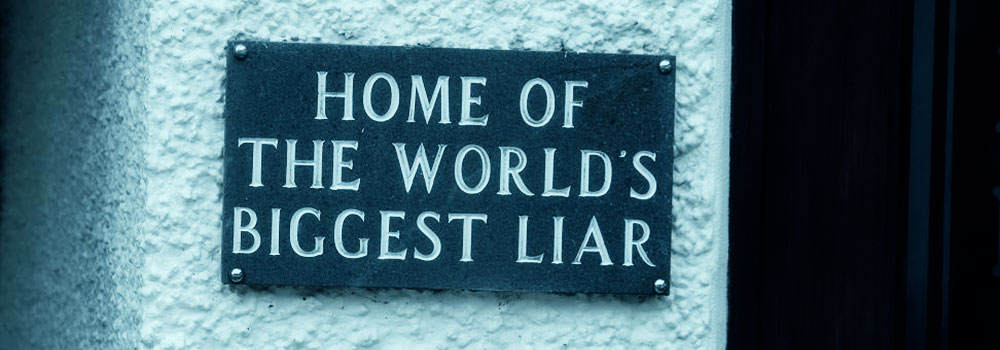A large percentage – maybe even the majority – of the people that you’re trying to attract don’t believe a word of what you say. Just the fact that you’re the one saying it, is enough for many people to think that you’re lying.
You offer the best service? Your prices are the lowest around? You offer the same product/service as someone else, but yours in better/faster/cheaper? At best you won’t be believed. At worst you’ll be ignored.
How come? Because as consumers we’ve all have our fingers burned. We all have stories where we’ve chosen to believe the BS, only to have become sorely disappointed at some point during or after the buying process.
Not only do we have our own stories, but we know 1001 people who have shared similar experiences with us in person, through traditional media, or online.
Saying Without Saying: The Art Of Being Subtle
But there’s an alternative to spewing-out hype and rhetoric. If you choose to tell your story in a way that’s more conversational, more demonstrable and more believable, then you have half a chance of your audience choosing to give you their attention.
If you have their attention, then you have your opportunity. Do a decent enough job now, and you’ve given your audience the incentive to spread your story.
Your Story Isn’t “Written” – It’s “Demonstrated”
However, you don’t start by coming up with a message that you want to persuade your customers to buy into, because they won’t. That’s what kind of, sort of, used to work a few years ago.
Today we’re all a lot smarter, more informed – and more cynical – about what we’re told to believe. You can have as many meetings and brainstorming sessions as you want, but people aren’t going to believe what you say just because you want them to.
Your widget does things that no other widget can do, plus it’s cheaper and you’re a great organization to do business with? We don’t care.
Your company sells the same stuff as 101 other companies, but your after-sales service is better? We don’t believe you.
This is probably the bitterest pill for businesses to swallow. For years organizations have focused their communications on features, advantages, and benefits. On developing and refining the basic contention that they offer the best solution to a particular customer problem.
Perhaps the contention is sound. It might even be true. You may believe it with all of your heart, but it doesn’t matter if your audience thinks you’re full of it. Just the very fact that you’ve presented it to them puts their guard up and makes the whole thing smell worse than last week’s tuna sandwich.
So what’s the answer? Imagine that instead of shouting from the rooftops about how great (you think) you are, that the consumer figures-out your story all on their own. The result is that they’re a gazillion times more likely to believe it – and tell people about it.
The Difference Between Awareness and Belief
This is the reason why (for the vast majority of products or services) cold-calling, telesales, banner ads and email blasts are the worst ways to effectively spread your message.
It’s not because people won’t notice them. Throw enough time and money in the right direction and they’re certain to be noticed – and maybe even remembered.
No, the reason why such methods won’t – and don’t – work is that they won’t be believed.
In order for you to be believed, the face presented to your audience must be different enough that they choose to notice it. At which time you have your opportunity to tell your story.
A “story”, mind you, not a thesis.
We’re not talking about a sales pitch where you outline the entire story from beginning to end, liberally peppering it with facts, charts, ratings, and jargon. As much as it probably hurts you doing it, you have to just enough to leave them interested to “know more” – and “no more”.
It’s about subtlety and suggestion, rather than shouting and announcing. You can’t ‘prove’ your way into closing the deal – that’s no longer in your control. You win the sale by having the customer prove to herself that you’re the right solution to her problem.
When I was at school there were two ways of learning. Once was being given a textbook, being told that the information contained inside are facts, and being asked to believe them. The other way was through discovery, experimentation and research. Instead of being told what the answer was, I was expected to find that out myself. Speak to any education professional today and they’ll tell you that one way works, the other way doesn’t.
The only difference is that in business, sales, marketing and so on there is no right answer – which is probably just as well. Because, even if there was, no-one would believe you.

